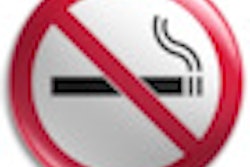Nearly four out of five Australian adults rated their oral health as being good, very good, or excellent in 2008, according to a report released December 1 by the Australian Institute of Health and Welfare (AIHW).
However, about one in five Australian adults rated their oral health as poor or fair, and many of these Australians fell into categories of low socioeconomic status, the AIHW noted.
The report identifies associations between self-rated oral health and socioeconomic factors such as education, private dental insurance, healthcare card status, home ownership, and difficulty paying a $150 dental bill.
When asked "How do you rate your oral health?" more than 65% of Australians responded "good" or "very good" and 11% as "excellent." But 21% rated their oral health as "fair" or "poor."
"About 30% of those aged 25 to 64 years without dental insurance and almost 40% of those aged 45 to 65 years who were renting their home rated their oral health as fair or poor," said Jane Harford of the AIHW's Dental Statistics and Research Unit, in a press release.
Lower levels of education were also associated with poorer self-rated oral health in all age groups.
"The largest difference was in the 25 to 44 year age group, in which 25% of those without tertiary education rated their oral health as poor, compared with 14% of those with at least some tertiary education," Harford said.
Among people ages 25 to 44, those who reported difficulty in paying a $150 dental bill were more likely to report fair or poor oral health than those who reported no difficulty in paying a $150 dental bill.
A second report, also released December 1, examines how periodontitis varies by socioeconomic status in Australia.
"The report shows that moderate and severe periodontitis was found in nearly one-quarter of Australian adults aged 18 years and older," Harford said. "Periodontitis is strongly related to age and also household income. After adjusting for age and sex, the prevalence of periodontitis is almost twice as great in lower income than higher income households."
Three related reports are now available as well:
- Age and the costs of dental care
- Trends in access to dental care among Australian teenagers
- Trends in access to dental care among Australian adults
Copyright © 2010 DrBicuspid.com



















